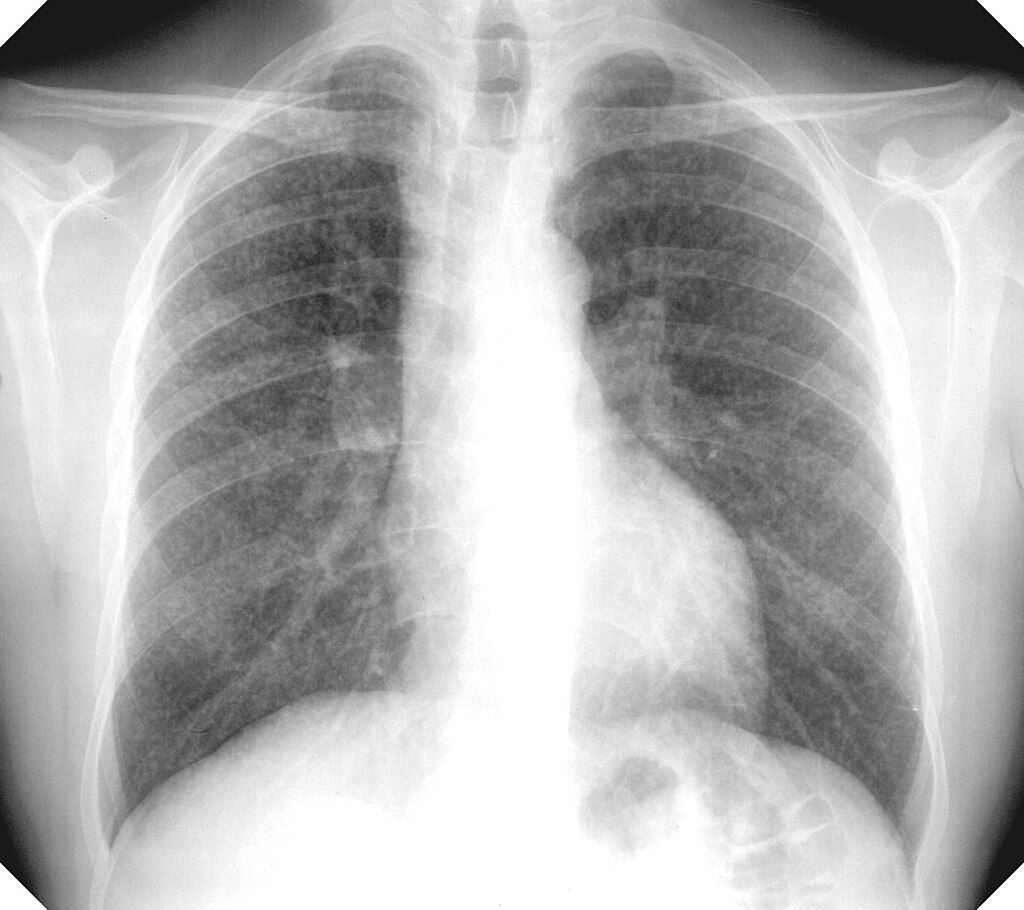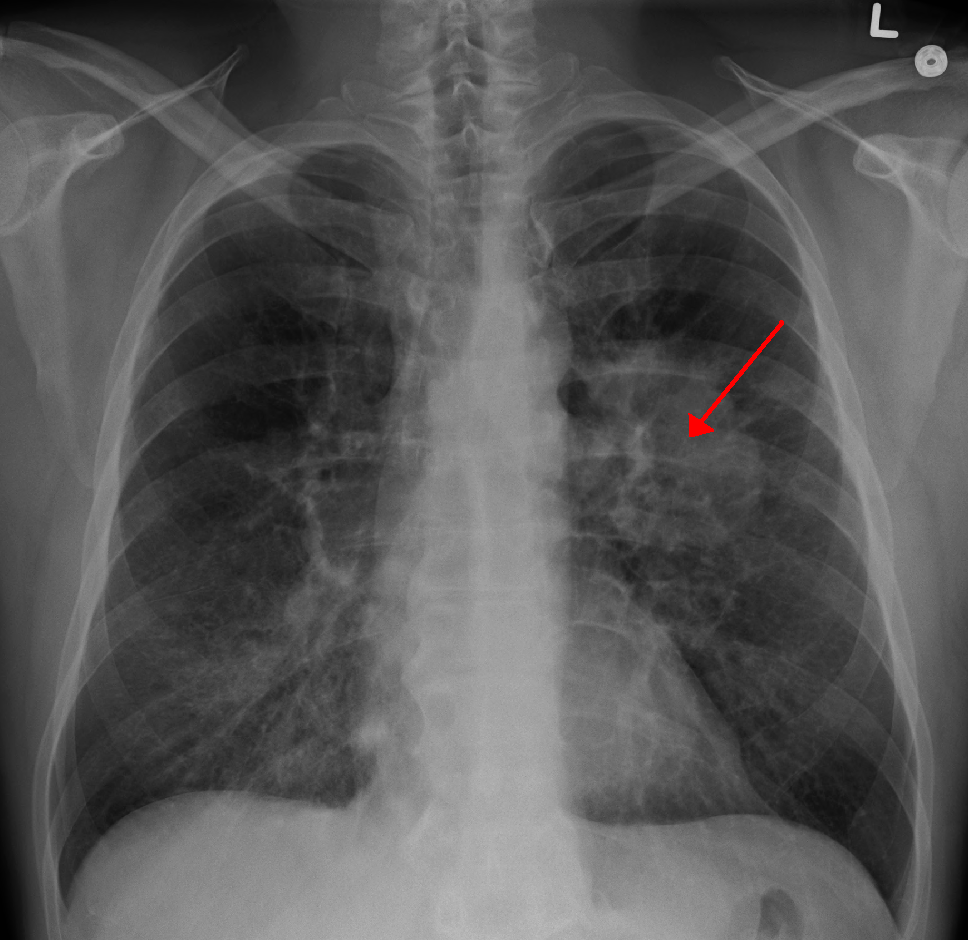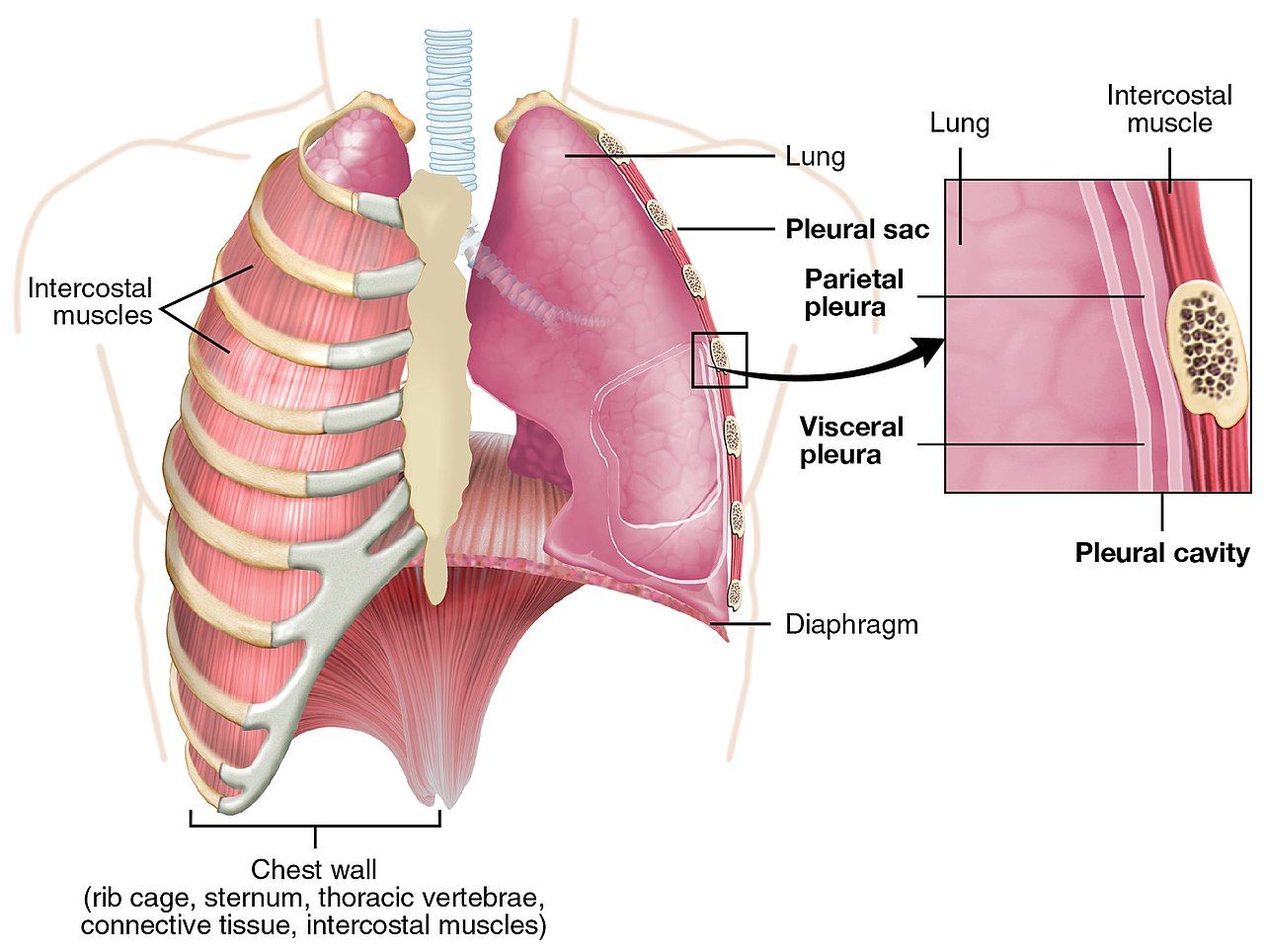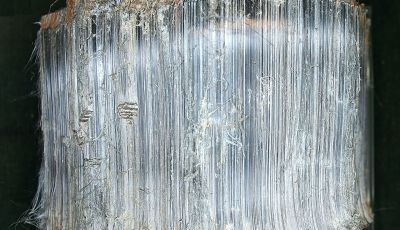Asbestos and Dust Diseases
-
![By User Clinical Cases on en.wikipedia - Originally from en.wikipedia; description page is (was) here04:00, 5 March 2006 Clinical Cases 843x1024 (67110 bytes) (Source: Early Asbestosis in a Retired Pipe Fitter http://clinicalcases.blogspot.com/2004/03/early-asbestosis-in-retired-pipe.html [http://en.wikipedia.org/wiki/User:Clinical_Cases Clinical_Cases]: I made the photo myself, licensed under Creative Commons ), CC BY-SA 2.5, https://commons.wikimedia.org/w/index.php?curid=729018](/wp-content/themes/yootheme/cache/47/asbestosis1-4770f16d.jpeg)
Asbestosis
Asbestosis is a chronic lung disease caused by long-term exposure to asbestos fibers. These microscopic fibers, when inhaled, can become trapped in the lungs, leading to inflammation and scarring of the lung tissue over time. Asbestosis primarily affects individuals who have worked in industries where asbestos exposure is common, such as construction, shipbuilding, and mining.
Symptoms of asbestosis typically develop years or even decades after exposure and may include:
- Persistent cough
- Shortness of breath, especially during physical activity
- Chest tightness or pain
- Clubbing of the fingers or toes (enlarged fingertips or toenails)
- Fatigue
- Loss of appetite
- Weight loss
Asbestosis is a progressive disease, meaning that it worsens over time and can lead to severe respiratory complications, including respiratory failure and an increased risk of developing other asbestos-related diseases such as lung cancer and mesothelioma.
While there is no cure for asbestosis, treatment aims to manage symptoms and improve quality of life. Treatment options may include:
- Quitting smoking (if applicable)
- Oxygen therapy to improve breathing
- Pulmonary rehabilitation programs to help maintain lung function
- Medications to alleviate symptoms such as cough and chest pain
Early detection and prevention of further exposure to asbestos are crucial in managing asbestosis and preventing its progression. If you suspect you may have been exposed to asbestos or are experiencing symptoms of asbestosis, it is essential to seek medical attention promptly.
-

Silicosis
Silicosis is a debilitating lung disease resulting from prolonged inhalation of crystalline silica dust, commonly found in industries such as mining, construction, and manufacturing. However, a concerning rise in silicosis cases has been observed among workers in the engineered stone industry, where silica-containing materials are used extensively.
Manufactured stone, often used for kitchen countertops and bathroom vanities, contains high levels of crystalline silica. During fabrication processes like cutting, grinding, and polishing, silica dust is generated and can be inhaled by workers. Over time, this inhalation leads to scarring and inflammation in the lungs, impairing their ability to function properly.
Symptoms of silicosis typically develop gradually and may include persistent cough, shortness of breath, chest pain, and fatigue. In advanced stages, individuals may experience severe respiratory complications, such as respiratory failure and increased susceptibility to respiratory infections.
Early detection of silicosis is crucial for managing the disease and preventing further progression. This involves regular health monitoring and screenings for individuals at risk of silica exposure. Additionally, minimizing exposure to silica dust through effective engineering controls, personal protective equipment, and proper workplace practices is essential for preventing silicosis and protecting workers’ health.
Efforts to raise awareness about the risks of silica exposure and improve workplace safety standards are essential in mitigating the incidence of silicosis and safeguarding the health of workers in industries where silica exposure is prevalent.
-

Pleural Plaques
Pleural plaques are non-cancerous fibrous thickening of the lining of the lungs (pleura) caused by exposure to asbestos fibers. Unlike other asbestos-related diseases, pleural plaques do not typically cause symptoms and are often discovered incidentally on imaging scans such as X-rays or CT scans. However, they indicate previous exposure to asbestos and may serve as a warning sign of potential asbestos-related health complications.
Key points about pleural plaques include:
-
Pleural plaques are a common sign of asbestos exposure, typically occurring in individuals who have worked in industries where asbestos exposure is prevalent, such as construction, shipbuilding, and manufacturing.
-
While pleural plaques themselves are not cancerous or harmful, their presence suggests past exposure to asbestos and increases the risk of developing more serious asbestos-related diseases, such as mesothelioma or lung cancer, later in life.
-
Pleural plaques usually do not cause symptoms, but in some cases, individuals may experience chest discomfort or pain.
-
There is no specific treatment for pleural plaques, as they are typically benign and do not require medical intervention. However, regular monitoring and follow-up with a healthcare provider are recommended to detect any potential progression of asbestos-related diseases.
-
Preventing further exposure to asbestos is essential in managing the risk of developing additional asbestos-related health complications. This includes avoiding work environments where asbestos exposure is likely and following safety protocols when handling asbestos-containing materials.
If you have been diagnosed with pleural plaques or suspect you may have been exposed to asbestos, it is essential to discuss your concerns with a healthcare professional who can provide appropriate guidance and monitoring.
-
-

Lung Cancer
Lung cancer is a malignant tumour that begins in the cells of the lungs and is primarily caused by exposure to carcinogens, including asbestos fibres.
- Symptoms of lung cancer may include persistent cough, chest pain, difficulty breathing, and unexplained weight loss.
- Early detection is critical for successful treatment and improved outcomes.
- Treatment options for lung cancer vary depending on the stage and type of cancer but may include surgery, chemotherapy, radiation therapy, targeted therapy, and immunotherapy.
- Asbestos exposure significantly increases the risk of developing lung cancer, particularly in individuals who smoke or have a history of heavy asbestos exposure.
- Prevention efforts focus on minimizing exposure to asbestos and other carcinogens, such as quitting smoking and following safety protocols in occupational settings.
- Regular screening and monitoring are essential for individuals with a history of asbestos exposure or other risk factors for lung cancer.
-

Other diseases
- Laryngeal Cancer: Malignant tumour that develops in the tissues of the larynx (voice box), often associated with smoking and exposure to carcinogens.
- Ovarian Cancer: Cancer that forms in the ovaries, the reproductive organs in women, with symptoms including abdominal bloating, pelvic pain, and changes in bowel habits.
- Testes Cancer: Cancer that originates in the testicles, the male reproductive organs, typically affecting younger men and presenting as a painless lump or swelling in the testicle.
- Pleural Thickening: Non-cancerous thickening of the pleural lining of the lungs, often caused by asbestos exposure, leading to restricted lung function and breathing difficulties.
- Pleural Effusion: Build-up of fluid between the layers of the pleura, the thin membrane surrounding the lungs, resulting from various underlying conditions such as infections, cancers, or heart failure.
Types of asbestos
Asbestos comes in three main types: Chrysotile, known as white asbestos, Crocidolite, often referred to as blue asbestos, and Amosite, which is commonly known as brown or grey asbestos. Each type varies in its fibre structure and properties, but all pose significant health risks when airborne fibres are inhaled.

Chrysotile (white asbestos)
Chrysotile, commonly known as white asbestos, is the most widely used type of asbestos. It has long, curly fibres that are flexible and easily spun into threads, making it suitable for various industrial applications such as insulation, roofing materials, and brake linings. Despite its widespread use, exposure to Chrysotile fibres poses serious health risks, including the development of asbestos-related diseases such as mesothelioma and lung cancer.

Crocidolite (blue asbestos)
Crocidolite, also known as blue asbestos, is characterized by its thin, straight fibres and distinctive blue colour. It was primarily used in applications where high heat resistance and insulation were required, such as in pipe insulation, cement products, and spray-on coatings. However, exposure to Crocidolite fibres is particularly hazardous, as they are easily airborne and can penetrate deep into the lungs when inhaled, leading to severe health effects including mesothelioma, lung cancer, and asbestosis.

Amosite (brown or grey asbestos)
Amosite, commonly known as brown or grey asbestos, is distinguished by its brittle, needle-like fibres. It was extensively used in construction materials such as insulation boards, ceiling tiles, and pipe insulation due to its high heat resistance and durability. Like other types of asbestos, inhalation of Amosite fibres poses serious health risks, including the development of asbestos-related diseases such as mesothelioma, lung cancer, and fibrosis. Despite its banning in many countries, remnants of Amosite-containing materials still pose a threat, highlighting the ongoing importance of proper asbestos management and removal practices.
Sources of asbestos
Asbestos occurs naturally in the environment and can be found in various geological formations worldwide. It is typically mined from open-pit mines or extracted from underground deposits. Once mined, asbestos fibres are processed and used in a wide range of industrial and construction applications, including insulation, roofing materials, and friction products. Despite its natural occurrence, exposure to asbestos fibres poses serious health risks and requires careful management to prevent adverse health effects.
Asbestos products encompass a wide range of materials that contain asbestos fibres. These materials were commonly used in construction, automotive, and manufacturing industries due to asbestos’s heat resistance, durability, and insulating properties. Common asbestos-containing products include insulation, roofing materials, flooring tiles, cement products, gaskets, and brake pads. While many asbestos-containing products have been banned or phased out, remnants of these materials still exist in older buildings and infrastructure, posing potential health risks if disturbed. Proper identification and handling of asbestos products are essential to mitigate the risk of exposure and ensure public safety.

Asbestos at Home
Asbestos at home poses a significant health risk if disturbed. Common household materials such as insulation, roofing, flooring, and siding may contain asbestos fibres, particularly in homes built before the 1980s. While undisturbed asbestos products typically do not pose a threat, any renovation or repair work that disturbs these materials can release harmful fibres into the air. It’s crucial for homeowners to be aware of the presence of asbestos in their homes and to take appropriate precautions when handling or renovating older properties. Professional asbestos testing and removal services can help ensure the safety of occupants and prevent exposure to asbestos-related health hazards.
Common Domestic Applications of Asbestos
- Roofing materials, such as corrugated asbestos cement sheets, were commonly used for their durability and fire resistance.
- Insulation materials, including asbestos-containing vermiculite, were used to insulate walls, ceilings, and attics.
- Flooring tiles and adhesives often contained asbestos fibers for their strength and heat resistance.
- Siding and shingles made from asbestos cement were used for their weatherproofing properties.
- Asbestos-containing cement pipes were used in plumbing and drainage systems for their durability and corrosion resistance.
- Asbestos was also used in textured paints, sealants, and caulking compounds for its fire-retardant qualities.
Book a health check
Schedule your health check today to assess any potential risks associated with asbestos exposure and to monitor for symptoms of asbestos-related diseases. Our experienced team will conduct thorough examinations to ensure your health and well-being.
